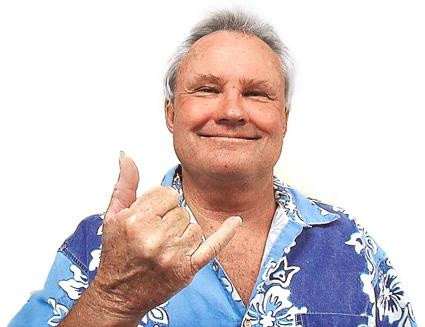
Last Sunday I wasn’t feeling great, so I decided to stay in bed all day and watch the stream of the Eddie Aikau Big Wave Invitational.
This is an extremely prestigious surfing competition that is held at Oahu’s famous Waimea Bay on the North Shore. They only hold it when the surf is very big, so many years go by without the running of the Eddie, simply because conditions don’t get big or good enough.
The event honors the great Hawaiian big wave surfer and lifeguard, the late Eddie Aikau. I was a judge for the very first running back in 1976, and have always felt close to this competition as I was also very good friends with Eddie and his family. I always try to watch it if I can.
Somewhere in the commentary, they mentioned that the also legendary big wave charger Pat Curren had died. Wow, I was thinking how – well, I am not sure of the correct term – it was that Pat would die on the day of the first running of the Eddie in many years. Erie maybe?
Pat Curren was one of the very first true “big-wave riders.” He was raised in La Jolla and learned to surf at the powerful Windansea Beach. His first trip to Hawaii in 1955 changed his life.
After that he dedicated himself to surfing and that was that. One of the reasons I relate to Pat so much, is it was the same for me.
In 1957, he was among the first crew to surf Waimea Bay.
After that, he began to design and build the first surfboards specially made to ride giant surf. They were called “big guns” or “elephant guns.” The whole purpose of the design was to be able to catch the giant waves and make it from point A, the take-off spot, to point B, the channel, as safe and secure as possible. Not an easy feat in those days, or even now.
As I was watching the event, I couldn’t help to wonder what Pat would have thought about all the personal watercraft pulling the surfers out to the line up, plus the use of leashes, and the television coverage going on.
In my day, we didn’t have any of that, but there were other people out there with you and they did rescues with helicopters. In his day, there was just him and a few other early risk-takers and that was it. Death was a much realer reality. (Did I just say “realer reality”? Haha, I like that).
Pat was considered the top big-wave rider of the first crop of big-wave riders. He was named one of the Top 20 surfers in the world by the first SURFER magazine poll in the early 1960s. His was what you would call a “big name.” But he was not comfortable in the limelight, and kept to himself.
Pat married and moved to Santa Barbara. In 1964, his first son, Tom, was born. Everybody that knows anything about surfing will know that Tom went on to win three world championships and become one of the greatest and most respected surfers of all time. He also shares his fathers’ resistance to the limelight and even with his enormous fame has remained a very private person in his own right. Super good musician, too.
In the early 1980s, Pat moved to Costa Rica to live a quiet life dedicated to strictly surfing. More of why I relate to him, the dude wanted to surf and that was it. So that’s what he did. He later moved to an area called the East Cape, near Cabo San Lucas on the southern tip of Baja. He lived out his last years surfing there in warm water and uncrowded waves.
As I was watching all these new chargers taking off on these giant waves that Pat Curren had pioneered, I couldn’t help but wonder how many of the people watching would even have a clue as to who Pat was when they announced his passing, let alone his contribution to what was taking place at that moment.
He was 90 years old, a true “surfers’ surfer.”
Related Articles
Corky: John Severson makes interesting list for many reasons
Corky: Surfing rides waves of changes
